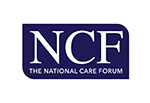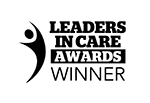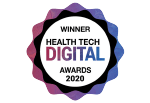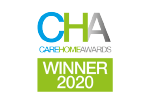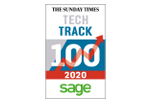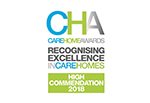Increased pressure on an already over-stretched system
The health and social care sector is concerned about the current pressures facing social care and the capacity and financial resources required to meet the objectives of the government's reform agenda.
Over the past decade, the social care sector in England has faced many challenges, such as:
- Recruitment and retention of staff - COVID-19 and Brexit have worsened the situation causing vacancy rates to skyrocket. Low wages for carers and the rising cost of living have also contributed
- The knock-on effect of understaffing in the sector puts people at risk; meeting care requirements and ensuring people live comfortably and safely is challenging in a social care workforce crisis
- Many care providers are still using paper-based social care records - this means that carers and clinicians don’t have access to the information that they need at the time they need it.
- Local authorities continue to face financial pressures - funding issues may result in care providers going out of business or handing back contracts
- Integrated care: connecting health and social care could be improved to enable a seamless journey for people moving between services
These are just a few factors the social care sector face. The Covid-19 pandemic has only heightened these challenges and emphasised the issues care providers and vulnerable people relying on care services face.
Technology can play a key role in fixing social care
Although care providers face all these challenges, they also face many opportunities to improve how they provide care. Technology is undoubtedly improving the delivery of social care services. The use of technology can streamline processes, improve the quality of care, reduce workload, and enable carers to spend more time with residents and achieve better outcomes.
For example, Person Centred Software, a market leader in care home software and provider of the UK's most widely used Digital Care System, supplies the care sector with solutions that:
- Improve residents' care outcomes
- Improve staff retention
- Allow care providers more time to care
From electronic care planning software to medication and visitor management systems, Person Centred Software has been transforming social care with its digital technology since 2013. Its care management software helps to drive efficiencies and reduce the burden on already stretched care teams.
Click the case study link below to get an insight into how Handsale Care Homes has improved efficiency, communication and staff retention across its eight homes by adopting Person Centred Software's Digital Care System.
Click here to read the case study
WCS Care has also seen care delivery across its services completely transformed, with more time being spent with residents and more care interactions recorded than ever before. Click the case study link below to learn more.
Click here to read the case study
Person Centred Software’s Digital Care System can:- Save care providers an hour a day
- Help to minimise risks, such as medication errors, dehydration or missed visits
- Record real-time information about the care provided
- Make it easier for care providers who use services to access their residents’ care records
- Help providers and carers to be aware when people’s needs change, and enable quick response
- Help to manage and support staff to do their job effectively and efficiently
- Offer the ability to use and compare data to improve people’s care
- Enable care notes to be easily stored, requiring less physical space
- Help information to be shared quickly, accurately and safely
- Support better use of resources across the health and care system.
Access to residents' care records
Person Centred Software was one of the first electronic care systems used in care homes to launch an integration with NHS Digital’s GP Connect service. Person Centred Software’s GP Connect integration enables care providers to access the GP records and medical notes of those being supported in real-time. So far, Person Centred Software has connected over 22,000 residents to their GP record.
''GP Connect is a fantastic tool as it enables us to triangulate residents’ care records with health records by capturing data from multiple GP systems. The benefits of GP Connect are instrumental – as management, we now have oversight of our residents’ care and health records which helps us deliver the best possible care and allows us to have a holistic care plan for all our residents.’’
Shaikh Hassan, Home Manager at Inwood House (Autograph Care Group)
ERed bag - sharing data between the care home and the hospital
With Person Centred Software’s Digital Care System, you can instantly share information with hospitals and external professionals via the eRedBag (electronic hospital pack) to give people the best quality of care at every stage of their health and social care journey.
Person Centred Software collaborated with the NHS South West London clinical commissioning group in 2018 on the NHS Demonstrator initiative. As a result, it became the first electronic care solution to digitally transfer the hospital pack directly to the hospital system used by St. Hellier Hospital.
Following this success in 2019, Person Centred Software was part of the steering group to develop a national product as part of the NHS Pathfinders project to design the eRedBag.
Click here to read more about implementing the eRedBag pathway.
How predictive models can impact the future of social care
patient experience, assist the workforce, and help the system run more efficiently. For example, AI and data science are revolutionising our ability to diagnose and treat diseases - they can provide many benefits in early detection by showing an individual's risks.
Residents living with dementia are not always able to communicate their needs. This might mean they cannot describe pain, describe symptoms and may thus not present symptoms clearly when they are becoming unwell. Using AI to process data, there's a potential for a digital system to identify changes in resident care, alert users, make predictions that a person may have an infection, and encourage earlier investigation, identification and treatment – avoiding further deterioration.
The Data Analysis Bureau (T-DAB) provides end-to-end machine-learning solutions to help clients better understand their data and deliver business insights. In 2021, Person-Centred Software collaborated with T-DAB to build a predictive model that enabled care providers to measure and compare quality and performance indicators. The predictive model collects valuable data from care home residences across the UK using Person Centred Software's Digital Care System. Person Centred Software provides APIs to access the data collected.
There are thousands of interactions between carers and the people they support. In a single interaction, a person may not have the context, historical data or visibility of the wider picture. For example, a carer may offer a person a meal they refuse. This single event may or may not be a concern (they might have just not felt like eating, or they recently had a snack and did not feel hungry); however, it could equally be that they have stated to eat less or lost appetite over time and have increased risk of malnutrition. AI models and machine learning can provide insights into changes in care needs that a human may not be able to see in a timely manner. This early intervention could differentiate between someone becoming frailer or maintaining their strength.
"When combined with the millions of care records captured every day through observational data recorded at the point of care, passive monitoring through technology could enable better care. With staffing levels in care becoming dangerously low, monitoring technology is becoming increasingly important to ensure people are safe and cared for, even when there's no direct human contact."
Andrew Coles, CEO of Person Centred Software
We've already seen the huge benefits of having timely access to meaningful data that supports better decision-making and outcomes for those supported in social care settings. Care providers have seen these benefits implemented in the existing generation of digital care records. Whilst the sector has widely been slow to embrace digital technology to enable business transformation, we already see an appetite to go beyond digitising existing ways of working.
In the future, we believe the norm will be to utilise predictive models that can harness the power of collecting data in volume, allowing early intervention and reducing the need and reliance on people using health services.




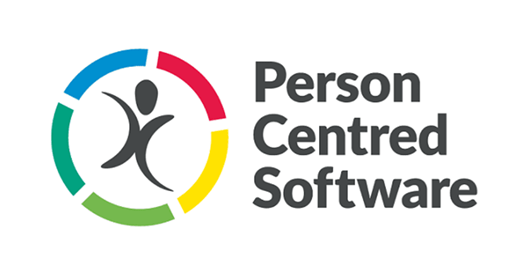
.jpg)

.webp?width=80&height=80&name=HTD%20Awards%202023%20Badge%20(4).webp)




